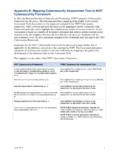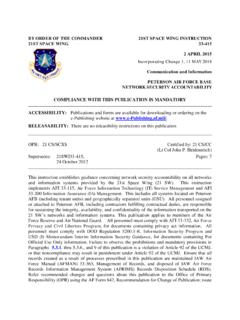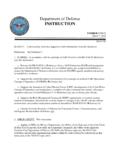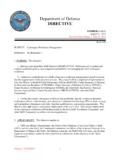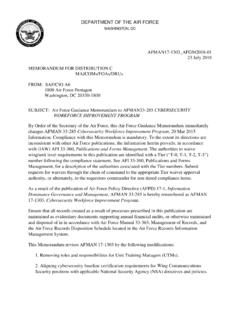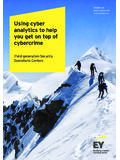Transcription of CYBER SECURITY REPORT 2016 - Serianu - Home
1 PortVPMKENYACYBER SECURITY REPORT 2016 Achieving CYBER SECURITY Resilience: Enhancing Visibility and Increasing awareness [ 4 Kenya CYBER SECURITY REPORT 2016 Achieving CYBER SECURITY Resilience Enhancing Visibility and Increasing awareness [ 5 Kenya CYBER SECURITY REPORT 2016 Enhancing Visibility and Increasing AwarenessVPM06 About the Report07 Acknowledgement08 Foreword10 Executive Summary13 Top 5 Priorities for 201715 Kenya CYBER Intelligence Report21 2016 Kenya CYBER SECURITY Survey32 Risk Ranking by Sector 36 Top CYBER SECURITY Issues in 2016 38 Top Trends Influencing Cybersecurity in Kenya42 The Serianu ]]
2 Cybersecurity Framework49 ReferencesAchieving CYBER SECURITY Resilience [ 6 Kenya CYBER SECURITY REPORT 2016 Achieving CYBER SECURITY Resilience Enhancing Visibility and Increasing AwarenessAbout the ReportThe Kenya CYBER SECURITY REPORT 2016 was researched, analysed, compiled and published by the Serianu CYBER Threat Intelligence Team in partnership with the USIU s Centre for Informatics Research and Innovation (CIRI), at the School of Science and Collection and AnalysisThe data used to develop this REPORT was obtained from various sources including; surveys and interviews with different stakeholders; several sensors deployed in Kenya and review of previous research sensors are non-intrusive network monitoring devices that perform the function of monitoring an organisation s network for malware and CYBER threat activities such as brute-force attacks against the organisation s servers.]
3 In an effort to enrich the data we are collecting, we have partnered with The Honeynet Project and other global CYBER intelligence partners to receive regular feeds on malicious activity within the country. Through such collaborative efforts we are able to anticipate, detect and identify new and emerging threats using our intelligent analysis-engine. The analysis-engine assists in identifying new patterns and trends in CYBER threat sphere that are unique to through the Serianu CyberThreat Command Centre (SC3) Initiative are warmly welcomed in an effort to improve the state of CYBER SECURITY in Kenya and across Africa.
4 This initiative is geared towards collaborative CYBER SECURITY projects in academia, industrial, commercial and governmental organisations.. For details on how to become a partner and how your organisation or institution can benefit from this initiative, email us at 7 Kenya CYBER SECURITY REPORT 2016 Enhancing Visibility and Increasing AwarenessAchieving CYBER SECURITY Resilience AcknowledgementAuthorsSerianu LtdBrencil Kaimba Kevin KimaniMartin Mwangi Barbara Munyendo Faith Mueni Daniel Ndegwa Stephen WanjukiNabihah RishadSamuel KeigeJeff KaranjaHilary SoitaUSIU AfricaPaula Musuva-Kigen Secauose OnyibePolly MugureKenneth Mbae Newton Karumba Andrew Ngari Edward OwinoContributorsFrancis WangusiDirector General, Communications Authority of KenyaPaula Musuva-KigenResearch Associate Director.
5 Centre for Informatics Research and Innovation (CIRI), Digital Forensics and CYBER Crime Lecturer United States International University (USIU)Joseph MathengeCISO Airtel AfricaOthersPaladion TeamReport Research and Analysis was conducted by the Serianu team in partnership with the USIU s Centre of Informatics Research and , layout and production: Tonn KriationCopyright Serianu Limited, 2016 All rights reservedFor more information contact: Serianu Limited, Turnkey House, 14 Chalbi Drive, Lavington Tel: +254 20 240 9294, Cell: +254 702 847 570 Email: | Website: Rajat MohantyChairman and CEO, Paladion Networks Juliet W.
6 MainaAssociate - Telecommunications, Media and Technology; Tripleoklaw AdvocatesBrencil KaimbaRisk & Compliance Consultant, Serianu Limited[ 8 Kenya CYBER SECURITY REPORT 2016 Achieving CYBER SECURITY Resilience ForewordIn 2012, we embarked on a journey to demystify the state of CYBER SECURITY in Africa. In four (4) years we have witnessed technology and CYBER SECURITY landscapes change rapidly. Then, CYBER criminals were opportunistic in nature but over time have become more skilled, focused and targeted with their attacks. The top methods used by CYBER criminals in the past 4 years were ransomware and database transaction manipulation.]
7 In comparison to 2016 , the top causes of compromise were malware and social engineering. Technology has also changed and we are seeing increased use of Optical Fiber Technology, introduction of 4G network capabilities and numerous companies are now offering Cloud computing more businesses digitize their business processes and move to the internet, their exposure to CYBER -attacks also increases. This new operational environment requires organisations to build capabilities around anticipating, detecting, responding and containing (ADRC) CYBER -attacks. Unfortunately, most businesses in Kenya are not investing in these capabilities.
8 As such, a typical SME in Kenya will have at least one or two systems fully exposed on the internet. Such systems will have default passwords and unpatched software. In addition, the internal teams are unaware of these vulnerabilities. Due to the lack of visibility among Kenyan organisations, they are making the wrong investments in SECURITY infrastructure and thus failing to anticipate, detect, respond and contain their CYBER threats. The one common theme across this REPORT is the growth in CYBER -criminal activity targeting both specific public and private organisations in Kenya.
9 Criminals are not only targeting our computers but are also targeting the information stored and transmitted within our networks. Whether 2012cyber criminals were opportunistic in nature2016more skilled, focused and targeted with their attacksWilliam Makatiani CEO, Serianu LtdAnticipateAssess & ImplementRespondPrevent & InvestigateSerianuCyber Threat Management ApproachContainCommunicate & ImproveDetectMonitor & Track[ 9 Kenya CYBER SECURITY REPORT 2016 Enhancing Visibility and Increasing AwarenessAchieving CYBER SECURITY Resilience the source of an attack is an insider, a hacker or a terrorist, the consequences are often the same - loss of revenue, sensitive information.]
10 Erosion of consumer and constituent confidence and interruption or denial of business of the most critical challenges facing Kenyan organisations is the lack of awareness among technology users. Many of these users mostly customers and employees have little knowledge of the level of risk they are exposing themselves and their organisations to. Such exposures range from well-meaning conversations about sensitive data in an elevator to sharing of sensitive information on unsecured servers or visiting malicious websites using company computers. These SECURITY lapses have exposed many Kenyan organisations to phishing and other social engineering related estimates the cost of cybercrime in Kenya to be USD 175 million in 2016 , an increase from the USD 150 million reported in 2015.
